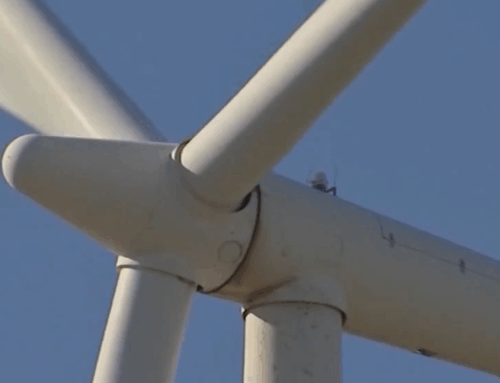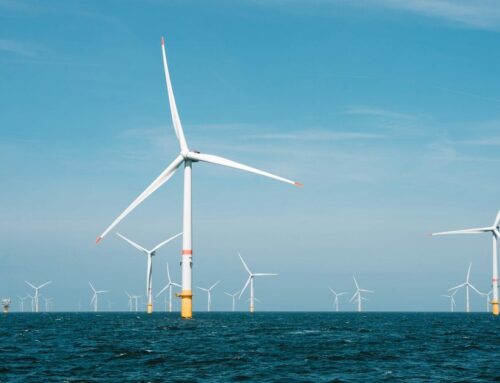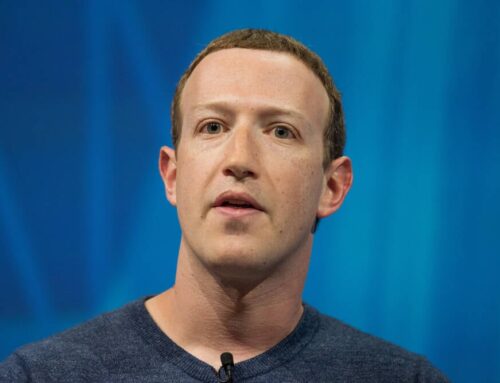The race to $1 trillion: Who should win Elon Musk or Ethereum?
November 7, 2025
When Elon Musk crosses the trillion-dollar threshold, it will mark more than personal success. It will signal a new phase in economic history, where individual influence rivals that of entire states.
As a Bitcoiner, I see Satoshi Nakamoto’s vision of decentralized wealth and democratized finance as a blueprint for diffusing power, a way to make value less dependent on singular actors.
Yet as capital, AI, and policy orbit Musk’s expanding empire, his rise exposes how far we’ve strayed from that ethos.
The very idea of “value” may be consolidating again, this time not in governments or banks, but in individuals who wield technology as a form of leverage.
Some would say Bitcoin embodies the purest form of private property: unconfiscable, borderless, self-sovereign.
From that angle, Satoshi might not have viewed a trillionaire as a failure of decentralization but as its logical, perhaps unintended, consequence.
Elon’s elaborate payday
As of today, Tesla shareholders have approved a compensation package that could potentially increase Elon Musk’s net worth to $1 trillion if the plan’s milestones are met.
More than 75 percent of votes at Tesla’s Nov. 6 annual meeting backed a multiyear, option-heavy plan that pays out only if Tesla clears operational and valuation hurdles, including a market capitalization of nearly $8.5 trillion and the deployment of large-scale autonomy and humanoid robotics.
The math embedded in Tesla’s plan sets up an unusual comparison: a single individual’s equity exposure can plausibly overtake the market cap of the top four altcoins combined.
How to reach the finish line: wealth, power, and policy
If all of Musk’s tranches vest and are exercised, his effective ownership could move into the mid-20s percent, subject to dilution and financing.
At $8.5 trillion, a 27 percent stake would be approximately $2.295 trillion from Tesla alone. SpaceX is valued at nearly $350 billion in private markets as of mid-2025, with published bull cases reaching the trillions by 2030 in defense and broadband.
xAI funding chatter has circulated in a $75 to $200 billion range. Layered together, the convexity of the option grant ties personal wealth to a small set of binary outcomes, above all, robotaxis and humanoid robots.
Those are policy-gated as much as they are technical. In California, Tesla holds a DMV permit for testing with a safety driver, not the driverless testing and deployment permits that unlock commercial-scale operations. Separate CPUC approvals govern the phases of ride service, according to state records and Reuters coverage.
NHTSA’s scrutiny of Full Self Driving features remains a headline risk, as seen in prior probes covered by Ars Technica.
The trillion-dollar crypto challenge in perspective
Currently, Elon Musk’s net worth exceeds that of any single altcoin network. Only Bitcoin has a higher market cap at over $2 trillion, and I’m bullish enough on BTC to believe it will continue to outperform the portfolio of any private individual.
The next highest, Ethereum, has a market cap that has fluctuated in a $390 to $600 billion range in recent months, currently sitting at around $400 billion, which is around $100 billion below Musk’s wealth.
So let’s do some basic forward modeling.
Under a conservative scenario where autonomy is delayed and Optimus remains niche, Tesla reaches a valuation of $3 trillion by 2035, yielding approximately $750 billion for Musk’s 25 percent stake in Tesla, with SpaceX at $500 billion and xAI at $50 to $100 billion.
That produces approximately $1.3 to $1.35 trillion in gross assets, and after accounting for exercise costs, taxes, and loans, net worth hovers just below, but may not surpass, the $1 trillion mark.
By comparison, if Ethereum were valued at $5,000 with 125 million coins, the market cap would be approximately $625 billion.
In a base case, Tesla reaches $5 trillion, Optimus works first in factories, and energy scales, putting Musk’s Tesla stake at around $1.25 to $1.45 trillion, with SpaceX at $1 trillion and xAI at $200 billion.
That configuration makes a trillion-dollar net worth a base outcome, while Ethereum, even at nearly $10,000 and with 120 to 125 million coins, places ETH’s value around $1.2 to $1.25 trillion.
In a bull case, Tesla reaches a market capitalization of $8.5 trillion, robotaxis are widely adopted, humanoids are shipped at scale, SpaceX advances toward a market capitalization of $2.5 trillion, and xAI surpasses $500 billion. Musk’s wealth becomes multi-trillion.
The comparison is not hero versus protocol; it is equity optionality versus network adoption.
| Scenario (2030–2035) | Tesla Market Cap | Implied Musk Tesla Stake | SpaceX / xAI | Gross Assets | Plausible Net Worth | ETH Supply | ETH Price | ETH Market Cap | Key Assumptions |
|---|---|---|---|---|---|---|---|---|---|
| Conservative | $3T | ~$750B | $500B / $50–100B | ~$1.3–1.35T | Sub-$1T–$1.1T | ~125M | $5k | ~$625B | Robotaxi limited geography, Optimus niche, ETF demand steady |
| Base | $5T | ~$1.25–$1.45T | $1T / $200B | ~$2.45–$2.65T | >$1T | 120–125M | $10k | ~$1.2–$1.25T | Partial autonomy monetization, Optimus in factories, ETF penetration |
| Bull | $8.5T | ~$2.1–$2.5T | $2.5T / $0.5T+ | $5T+ | Multi-trillion | ~120M | $20k | ~$2.4T | Broad robotaxis, humanoid scale, crypto supercycle |
So, for Ethereum to surpass Musk within the next decade and reach a $1 trillion valuation first, ETH would need to break above $10,000, assuming Tesla’s market cap remains below $3 trillion.
Billionaire influence and the politics of wealth
However, I believe that the social framing around these numbers also matters.
Research published through Cambridge University Press shows that admiration for the mega-rich, and related meritocracy or system-justifying beliefs, reduces support for redistribution and progressive taxation, including among lower-income groups.
Long-term research in political science suggests that policy outcomes are more responsive to the preferences of affluent individuals than to those of average citizens, indicating that extreme concentration can lead to enduring political influence.
In parallel, studies in economics have found that exposure to wealthier peers lowers life satisfaction and increases conspicuous consumption and borrowing, with significant effects at the lower end of the distribution, as documented in the Quarterly Journal of Economics and related work.
Polling by the Harris Poll in 2024 shows majorities say billionaires do not do enough for society, and UK polling points to broad concern about the political reach of the very rich.
These are not abstract vibes around celebrity. They are channels through which billionaire glamor and media narratives feed back into budgets, ballots, and debt.
Context on scale helps locate the ethics.
Forbes counted 3,028 billionaires in 2025, a record high, out of a world population of roughly 8.23 billion, which means about one in 2.7 million people.
No trillionaire currently exists. UBS estimates global household wealth at $450 trillion. One trillion dollars is about 0.22 percent of that total. The median adult wealth globally is in the low thousands of dollars, and more than 80 percent of adults have less than $100,000, according to Reuters’ summary of UBS data.
A one trillion-dollar personal fortune would equal the entire net worth of approximately 100 to 130 million median adults. The base rate for anyone moving from millionaire to billionaire is vanishingly low. Treating a trillion as an aspirational target for the public is numerically incoherent.
Policy choices are the swing factor around the tail. Status quo rules let top-end fortunes compound, and given the documented tilt in policy responsiveness, affordability issues tend to lag behind.
A targeted 2 percent annual tax on billionaire wealth, as modeled by Zucman and cited by Oxfam and reported by The Washington Post, would raise approximately $250 billion per year, which could fund public goods or cost-of-living relief while modestly trimming the tail.
A cultural shift away from grand man narratives and toward systemic accounts of progress raises support for progressive taxation in experimental settings, creating a softer check on the spillovers of billionaire worship.
Policy and public perception shape the trillion-dollar race
None of these measures changes Tesla’s valuation math or crypto demand curves on their own. They adjust the environment in which extreme fortunes sit.
There is also a governance angle within Tesla. Shareholders, not just the board, priced the option convexity and approved it, which answers one critique while raising another.
If state permits and safety agencies effectively gate the autonomy cash flows that underpin the plan, then public oversight now sits upstream of private wealth options worth trillions.
According to Reuters and California DMV records, Tesla still requires driverless testing and deployment approvals for the robotaxi scale in key markets, and NHTSA reviews remain active. The calendar for those decisions, not press events, will determine whether the package converts.
We do not need to cheer or boo Musk to see the comparison cleanly.
A monetary network’s path to one or two trillion relies on adoption, throughput, and flows. In contrast, a founder’s path to one or more trillion relies on a narrow set of technical and regulatory unlocks.
One can admire execution or engineering without celebrating a culture of billionaire worship that blunts support for redistribution and amplifies the sway of elites over policy. The math is plain, the worship is optional.
Ultimately, whether the first to reach $1 trillion is a man or a network, the more important question is what kind of system we want to empower: one built on individual ambition or collective adoption?
Search
RECENT PRESS RELEASES
Related Post




